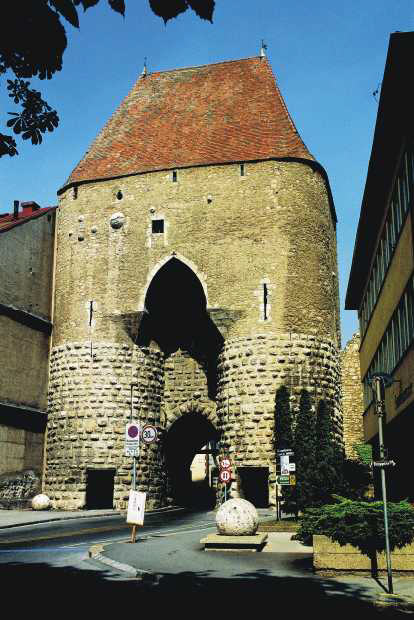I am an occasional member of a group of likeminded and extremely international people who like to go for a walk on a Sunday, sometimes this will be an actual 8 hour hike, sometimes a tiny stroll with a bit of culture thrown in. This is the advantage of doing things with non-natives, they are a lot more willing to go see the sights, and/or go see if there are any sights to be seen!
 |
The castle at Hainburg, beneficiary of Richard the Lionheart's misfortune
|
The Sunday we went to Hainburg was one of those Sundays more tourism than hiking tour. Hainburg an der Donau is a town of about 6000 people situated right next to the danube (the clue is in the name!). It has quite a lot to recommend it, touristically speaking. The town centre is still surrounded by high walls built originally in the 13th century, and these are broken only by some rather large medieval gatehouses, one of which houses the comprehensive town museum. Atop the hill above the town is the castle (Burg) alluded to in another part of the name, the destination for our mild stroll. A real proper castle ruin, not a prettified villa or folly, the castle was expanded and improved substantially using the ransom money England paid to get back Richard the Lionheart! Near to the town proper lies the important Roman crossroads settlement of Carnuntum, and the town also includes a museum featuring a number of roman artefacts (and on the day we arrived, some kind of archaeological conference).
 |
Above, one of the medieval town gatehouses!
|
Hainburg is also almost directly on the border with Slovakia, and is closer to Bratislava than Vienna. From the castle walls Bratislava can be recognised by some of its more famous sights such as the castle. The train line to Bratislava used to run past Hainburg but now the main line runs somewhere else due to a cocktail of historical circumstances, the modern train service runs on only one line and the stations are tiny... The same S-Bahn that terminates after Hainburg goes past the airport, so the train starts out packed and then very quickly empties as you travel across the dead flat of the Vienna basin towards the widely visible hill behind the town. Geologically speaking these hills mark the edge of the Vienna basin, the very end of one little outlier of the alps and, over the river, the start of the slovakian tatras.
Hope you enjoy the small gallery of images, showing a more typical small austrian town instead of the overgrown and beautiful monster metropolis (hah) that is Vienna.
Der Tom
PS stay tuned for a couple more updates soon, I have already sorted and uploaded pictures for them which is always the slowest task, so I should get round to writing about them shortly.


No comments:
Post a Comment